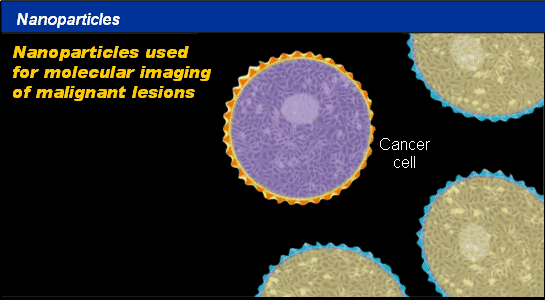1. Cancer Treatment
Nanoshells kill tumor cells selectively.Nanoshells have a core of silica and a metallic outer layer. These nanoshells can be injected safely, as demonstrated in animal models.
Because of their size, nanoshells will preferentially concentrate in cancer lesion sites. This physical selectivity occurs through a phenomenon called enhanced permeation retention (EPR).

Scientists can further decorate the nanoshells to carry molecular conjugates to the antigens that are expressed on the cancer cells themselves or in the tumor microenvironment. This second degree of specificity preferentially links the nanoshells to the tumor and not to neighboring healthy cells.
As shown in this example, scientists can then externally supply energy to these cells. The specific properties associated with nanoshells allow for the absorption of this directed energy, creating an intense heat that selectively kills the tumor cells. The external energy can be mechanical, radio frequency, optical – the therapeutic action is the same.
The result is greater efficacy of the therapeutic treatment and a significantly reduced set of side effects.
2. Nanoparticles used for molecular imaging of malignant lesions

Nanoscale devices have the potential to radically change cancer therapy for the better and to dramatically increase the number of highly effective therapeutic agents.
In this example, nanoparticles are targeted to cancer cells for use in the molecular imaging of a malignant lesion. Large numbers of nanoparticles are safely injected into the body and preferentially bind to the cancer cell, defining the anatomical contour of the lesion and making it visible.
These nanoparticles give us the ability to see cells and molecules that we otherwise cannot detect through conventional imaging. The ability to pick up what happens in the cell – to monitor therapeutic intervention and to see when a cancer cell is mortally wounded or is actually activated – is critical to the successful diagnosis and treatment of the disease.
Nanoparticulate technology can prove to be very useful in cancer therapy allowing for effective and targeted drug delivery by overcoming the many biological, biophysical and biomedical barriers that the body stages against a standard intervention such as the administration of drugs or contrast agents.
